A roof overhang is an essential feature of a roof, extending beyond the walls of your home. It protects your walls from direct exposure to the sun and rain, while also adding both functional and aesthetic value to your house. Understanding the different types of roof overhangs & their role is crucial for homeowners, as these overhangs can significantly enhance the protection and appearance of your home. Many new homeowners may not fully realize the importance of roof overhangs. At Sky Roofer, we aim to educate homeowners about this key aspect of roofing. Our goal is to ensure you understand how these overhangs contribute to your home’s durability and aesthetic appeal.
What are Roof Overhangs and Why are they Important?
Roof overhangs serve as a protective barrier that helps keep your walls and foundation safe from rainwater and harsh sun exposure. They can be found on all sides of your home, including the gable ends. Roof overhangs are not only functional but can also enhance the overall design of your home, making it look more stylish and appealing.
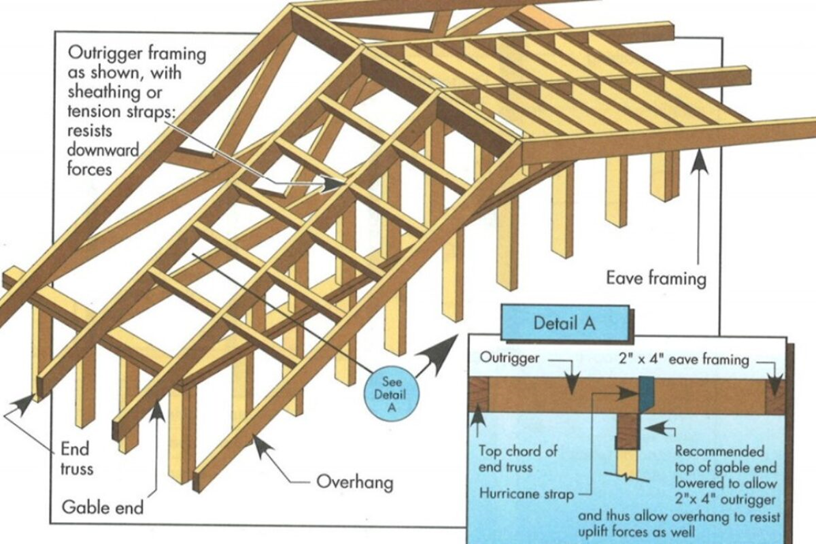
At Sky Roofer, we believe that every homeowner should understand how roof overhangs work, so they can make informed decisions when it comes to home design and roof maintenance.
Types of Roof Overhangs
There are several types of roof overhangs, each with a unique function and design. Let’s take a look at the most common ones:
1. Gable Roof Overhang
A gable roof overhang extends from the triangular part of the roof. It sticks out from the sides of the house and protects your walls from rain and sun. This traditional style of roof overhang helps your home appear larger and adds a classic, graceful look to the exterior.
Benefits of Gable Roof Overhang:
- Protects your walls from rain and sun.
- Adds a timeless, classic look to your home.
- Ideal for homes with gable-style roofs.
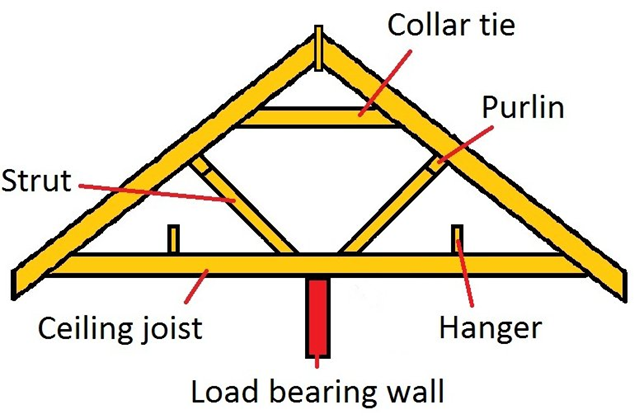
2. Shed Roof Overhang
A shed roof overhang slopes in one direction and is often used in modern home designs. This simple roof overhang can cover patios, decks, and other outdoor spaces, keeping them dry during rain. Shed roof overhangs are easy to build, cost-effective, and low-maintenance.
Benefits of Shed Roof Overhang:
- Provides protection for patios and decks.
- Perfect for modern homes and minimalistic designs.
- Easy to install and maintain.

3. Flat Roof Overhang
A flat roof overhang extends from a flat roof and is usually level with the main roof. These overhangs help protect your walls from rain and sun. Flat roof overhangs come in various sizes, from small extensions to larger overhangs that provide additional covered outdoor areas. Some flat roof overhangs also have built-in gutters to help manage rainwater.
Benefits of Flat Roof Overhang:
- Protects your walls from rain and direct sunlight.
- Helps keep your home cooler by blocking heat.
- Can create covered outdoor areas for relaxation.
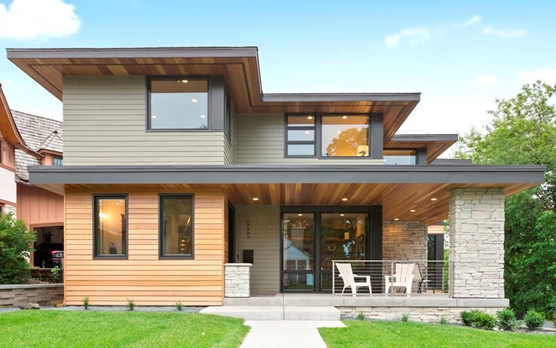
4. Awning Roof Overhang
An awning is a small roof attached to a wall, typically covering windows, doors, or patios. Awnings can be made of fabric, metal, or wood and come in various colors and designs. They provide shade and rain protection, while also lowering energy costs by keeping your indoor spaces cooler.
Benefits of Awning Roof Overhang:
- Shields windows, doors, or patios from rain and sun.
- Reduces indoor temperatures, lowering energy costs.
- Can be customized to match your home’s style.
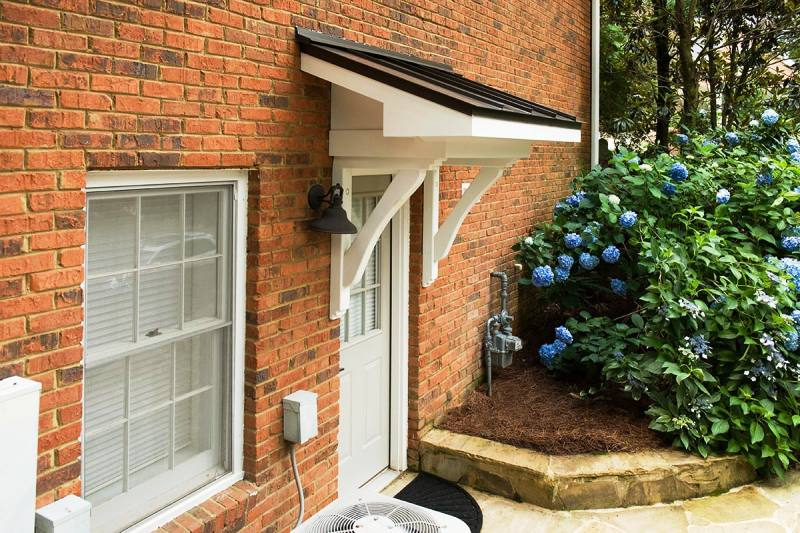
5. Bonnet Roof Overhang
A bonnet roof has two slopes, with the lower slope extending out further than the upper one. This creates a wide overhang that wraps around the house, offering plenty of shade. Bonnet roof overhangs are perfect for homes in hot climates because they help keep the house cool.
Benefits of Bonnet Roof Overhang:
- Provides ample shade, ideal for hot weather.
- Covers porches or walkways for additional protection.
- Adds a traditional, elegant look to your home.
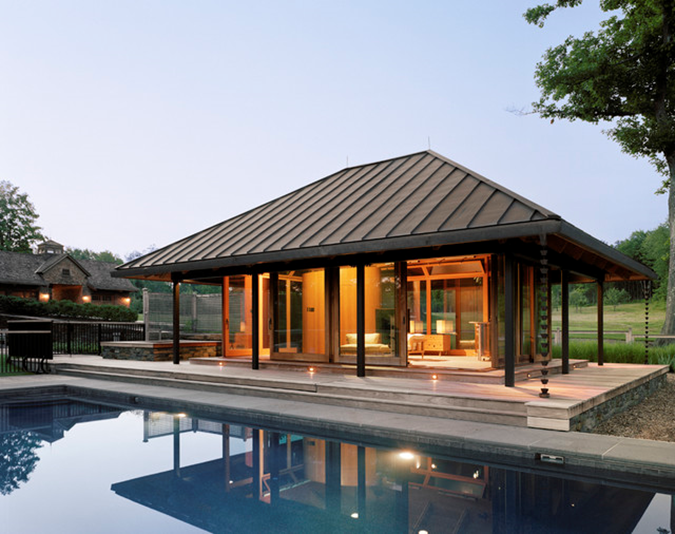
6. Curved Roof Overhang
Curved roof overhangs are designed with a rounded shape, either following the curve of the roof or added to a straight roofline. These overhangs are often seen in modern and unique architectural styles. Besides their visual appeal, they also provide rain protection and create interesting shadows on the building.
Benefits of Curved Roof Overhang:
- Protects your home from rain.
- Adds a unique, stylish element to your roof design.
- Creates attractive shadows for visual interest.
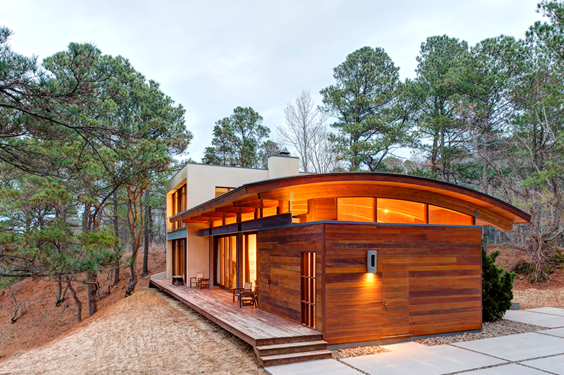
7. Cantilevered Roof Overhang
A cantilevered roof overhang extends out from the building without visible support, giving the appearance of a floating structure. This type of overhang is common in contemporary designs and creates bold, eye-catching outdoor spaces.
Benefits of Cantilevered Roof Overhang:
- Creates a modern, floating look.
- Provides covered outdoor areas with no visible supports.
- Adds a dramatic architectural feature to your home.
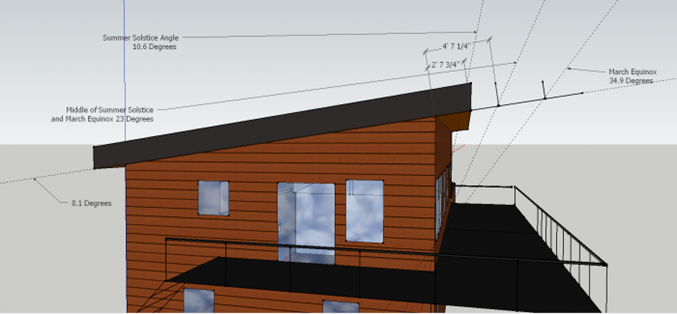
8. Hip Roof Overhang
A hip roof overhang extends from all four sides of the roof, wrapping around the house. These overhangs provide protection from rain and sun, while also adding style and balance to the design. Hip roof overhangs can vary in size, with larger overhangs offering more shade and protection.
Benefits of Hip Roof Overhang:
- Protects the entire house from rain and sun.
- Adds a stylish, balanced look to your home.
- Ideal for homes in hot or rainy climates.
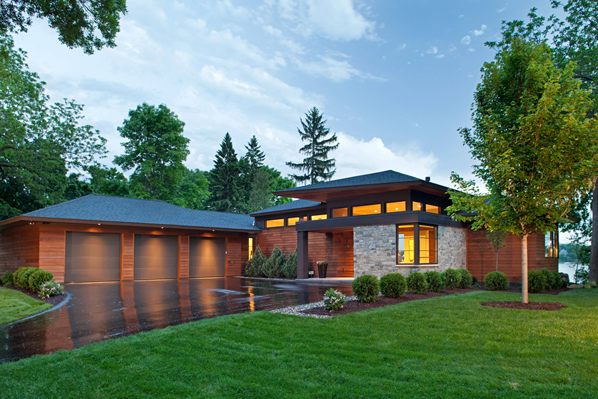
Why is Proper Roof Overhang Framing Important?
Proper roof overhang framing is crucial to ensure the longevity and stability of your roof. Framing helps support the roof deck and prevents sagging or damage. Overhangs direct rainwater away from the walls and foundation, preventing water damage. Additionally, roof overhangs can help improve your home’s energy efficiency by offering natural shade during the summer and improving attic ventilation.
Key Reasons for Proper Framing:
- Supports the roof deck and prevents sagging.
- Directs water away from the house, preventing damage.
- Enhances energy efficiency with proper ventilation.
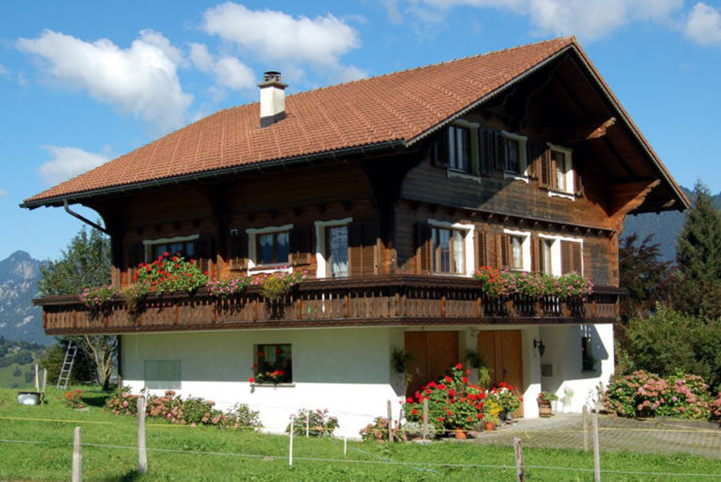
How Long Should A Roof Overhang Be?
The recommended length of a roof overhang depends on the roof part in question. For the eaves (the lower edges of the roof), the overhang should be between 12 and 18 inches (1 to 1.5 feet). For rakes (the sloped edges at the gable ends), the overhang is usually around 8 inches. These measurements help protect your walls and foundation from water and sun damage.
Overhang Length Guidelines:
- Eaves: 12 to 18 inches (1 to 1.5 feet).
- Rakes: Around 8 inches.
- Adjust according to the design of your home and local climate.
What is the Underside of a Roof Overhang Called?
The underside of a roof overhang is known as the soffit. Soffits are important because they protect the underside of the roof from weather and keep pests from entering your attic. They also help with ventilation, which can keep your house cooler in the summer and prevent moisture buildup. Soffits are available in various materials, including wood, vinyl, and metal, and can be solid or ventilated to allow airflow.
Benefits of Soffits:
- Protects the underside of the roof from damage.
- Helps maintain airflow in the attic, preventing moisture buildup.
- Enhances the appearance of your home’s exterior.
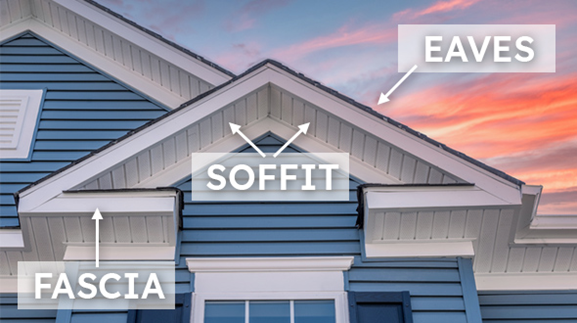
Conclusion
Roof overhangs are an essential feature for protecting your home from the elements, enhancing energy efficiency, and adding curb appeal. Whether you’re considering a traditional gable overhang or a modern cantilevered design, understanding the types and roles of roof overhangs can help you make informed decisions for your home’s roof.
At Sky Roofer, we specialize in roofing solutions that cater to your specific needs. If you’re looking for expert advice or need roofing services, feel free to contact us at skyroofer.com. Our team is here to help you with all aspects of roof design and maintenance.
FAQs about Roof Overhangs
Q: What is the primary function of a roof overhang?
Roof overhangs protect your home’s walls from rain and sun. They also help with ventilation and provide shade, which can reduce cooling costs in the summer.
Q: How long should my roof overhang be?
The length of your roof overhang depends on your roof style and local climate. Generally, eaves should extend 12 to 18 inches, while rakes should extend around 8 inches.
Q: What materials can be used for roof overhangs?
Roof overhangs can be made from a variety of materials, including wood, metal, vinyl, and shingles that match the rest of your roof.
Q: Can roof overhangs improve energy efficiency?
Yes, roof overhangs provide shade and ventilation that can help keep your home cooler in the summer, reducing the need for air conditioning.
Q: Are roof overhangs important for water drainage?
Yes, roof overhangs help direct water away from the walls and foundation of your home, preventing water damage and erosion.



